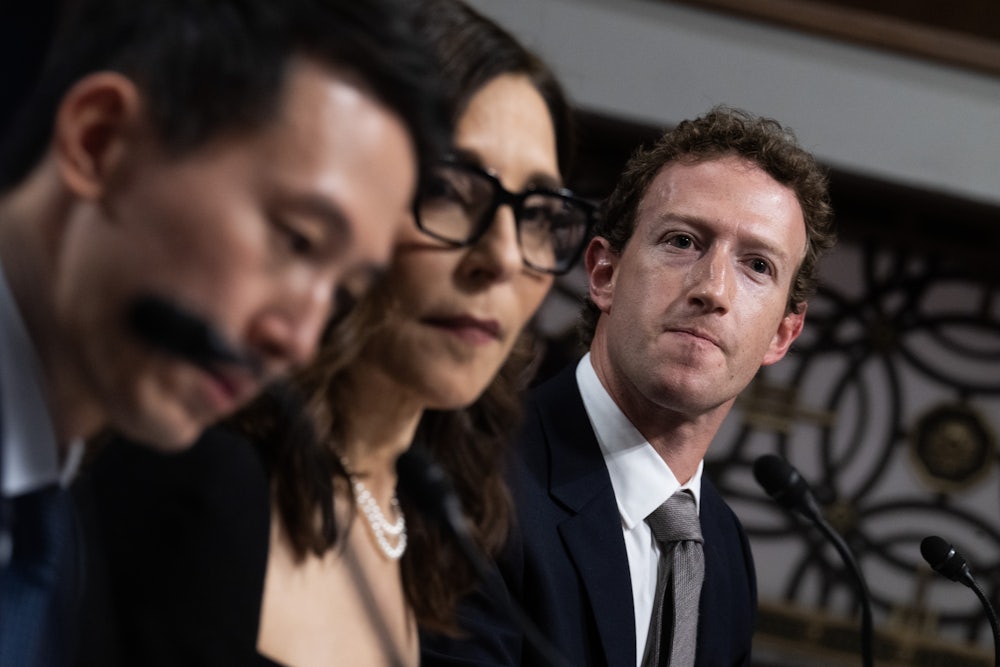One version of the abrupt, spectacular downfall of The Messenger, the news site that shuttered abruptly on Wednesday after its founders blew $50 million in less than a year, revolves around the arrogance and stupidity of its founders. Pitched as a centrist, nonpartisan outlet, it apparently was conceived on the (wrongheaded) assumption that because many Americans consider themselves independents and mistrust the media, there must be a massive, untapped market of news consumers who just want the cold hard facts. And the site was going to tap that market—more than 100 million monthly readers, it hoped—with a decade-old strategy.
And yet, there’s another version that’s also true. Even if The Messenger’s founder, Jimmy Finkelstein, had been competent—and I want to be very clear that he was not—the site had almost no chance of succeeding anyway. The economics of media in 2024 are as dismal as they have ever been. Even outlets that have been profitable and successful of late—notably The Washington Post, but also Vox and Insider—have seen significant job cuts. After spending a decade jumping from business model to business model, the media industry has run out of options. And the fault lies less with the leaders of these organizations than with the real powers that be: tech giants.
The Messenger launched last May with big talk about reinventing the news. Finkelstein, who previously had turned The Hill into a shameless aggregation machine and fount of crackpot punditry, said the outlet would “champion balanced journalism in an era of bias, subjectivity, and misinformation.” He promised that a huge staff would storm the gates of the establishment, winning over people who had grown skeptical of outlets that strive to occupy the center, like The New York Times. And Finkelstein thought he could do it in a matter of months.
But after assembling an enormous and talented team—the company eventually hired around 300 people—Finkelstein and his minions quickly pivoted away from original reporting and instead instructed their editorial team to crank out as many stories as possible—typically by aggregating existing stories from reputable outlets (like the Times) and more tawdry ones (like The Daily Mail). The obvious goal was to game search and social traffic, thereby juicing digital ad revenue—a strategy that many observers immediately identified as flawed. Last May, Nieman Lab’s Joshua Benton wrote that The Messenger represented “an aggressive sort of denial about the world of digital news publishing in 2023. It’s LARPing an earlier time.”
In another era, it might have worked—for a couple of years, anyway. But today, there are simply no ways to run a newsroom of The Messenger’s size on digital ad revenue alone. Google and Facebook have eviscerated the online advertising world; tens of millions of clicks might net you a few million dollars over the course of a year, enough to maybe run a newsroom a fraction of the size of The Messenger’s. And the thing is, digital ad revenue has all but dried up, thanks in large part to the very platforms that Finkelstein’s team was trying to game. (Of course, it didn’t help that the company also dropped more than $8 million on glitzy offices in New York, Washington, and Florida.)
The Messenger was a particularly spectacular failure, but it also highlights how desperate the media industry has become to find a viable business strategy, especially at scale. Various pivots—notably to video via Facebook and YouTube, and audio via podcasting—led to brief windfalls. Both have dried up in recent years, thanks to tech companies’ dominance in advertising, their lies about revenue and audience potential, and the general glut of content.
Subscriptions and membership plans offered another possible path—albeit one that would have been difficult to pursue for a new outlet of The Messenger’s size and ambition. But this model has its risks too. The Washington Post expanded dramatically thanks to a boom in Trump-era subscriptions, but those declined precipitously in recent years, leading to a wave of cancellations and then, last month, buyouts. Now, the Times seems like the only large, mainstream outlet built on this model—and its robust subscription numbers owe as much to non-journalistic offerings (puzzles and recipes) as they do to stories.
There are larger economic problems as well. Not long ago, digital startups could survive by pivoting to the latest revenue model, as long as they could continue raising money from investors with promises of continued growth. This was, in retrospect, a phenomenon of the zero-interest-rate era. Now that capital actually costs something for investors, they’re far less likely to throw money at risky ventures like digital media. (This has also played a role in the decline of advertising. Recently, digital news outlets could rake in cash from Silicon Valley start-ups promising to disrupt the underwear industry. Now venture capitalists are being more careful, and there’s less ad money being thrown around to raise brand awareness of start-ups.)
The result is a dismal situation for media companies of all sizes and types. Local news was the first casualty of the rise of Google and Facebook, as these outlets have lost tens of thousands of jobs in recent years, resulting in a crisis of reporting across the country. But that crisis has now reached national outlets as well. There isn’t enough money in subscriptions. There isn’t enough money in advertising. You can build a large audience and still only bring in a few million dollars, as The Messenger did (just $3 million to be exact).
A sea of Substacks and hyperlocal nonprofit news organizations cannot fill this hole, and indeed they have not. The only answer would seem to be government intervention—either in the form of regulating or breaking up social media networks and search engines, or directly funding news outlets. But there is little appetite for doing either thing, at least on the national level. On Wednesday, tech CEOs were hauled before Congress to address social media’s role in child exploitation. It’s hard to imagine a similar hearing focused on their role in the decimation of the media industry. Saving the media, given the public’s general antipathy for reporters, is not exactly a winning political issue.
And so, the media industry is stuck in what feels like a slow-motion apocalypse. On Wednesday, The Messenger’s employees learned, via tweets from reporters at Semafor and The New York Times, that the company would be abruptly shutting down; not long after, they learned from reporters at the same outlets that they would not be receiving severance. The site, which once published hundreds of stories a day—it often doubled or tripled the output of the Times—went to white, eliminating not just their employment but any evidence that they had worked there at all.
Eight months and $50 million later, that’s what’s left of The Messenger: nothing. It’s Jimmy Finkelstein’s fault, to be sure: He wanted to replace the Times but instead built a journalistic Quibi. But the crisis facing the media industry is much larger, and it’s still getting worse. It certainly doesn’t help if a media company is run by an idiot. But at this point, even one run by a genius would likely shutter before long.






